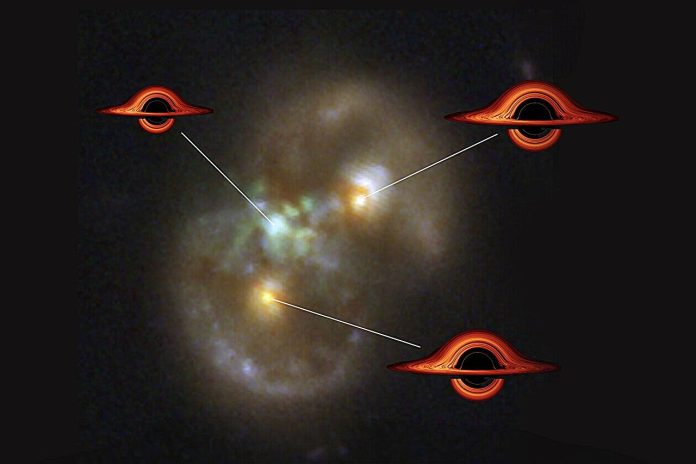
In a discovery that could change how we understand the universe, a team of astronomers led by Yale’s Pieter van Dokkum has found what may be the first direct evidence of a newly formed supermassive black hole.
The stunning finding comes from a galaxy system that looks like the infinity symbol—earning it the nickname “Infinity”—and may offer a glimpse into how some of the most mysterious objects in the universe are born.
The discovery is detailed in a new study soon to be published in The Astrophysical Journal Letters.
The team says this black hole didn’t come from the core of a galaxy, as expected, but instead seems to have formed in the aftermath of a dramatic cosmic collision between two galaxies. This unusual event could explain how massive black holes formed so early in the universe’s history.
Van Dokkum, a professor of astronomy and physics at Yale, described the discovery as possibly “the closest thing we’ll ever get to a smoking gun” for watching a black hole being born.
What makes the Infinity galaxy so strange isn’t just its appearance—it looks like a sideways figure eight—but also what’s happening at its center.
Usually, when two galaxies collide, the supermassive black holes at their centers are expected to merge over time. But in this case, the black hole is found in the middle of the newly formed structure—not inside either of the original galaxy cores.
And it’s surrounded by clouds of gas, actively pulling in material, which strongly suggests that it’s young and still growing.
The team spotted the galaxy while analyzing images from NASA’s James Webb Space Telescope as part of the COSMOS-Web survey. They then followed up using data from the W.M. Keck Observatory in Hawaii, the Chandra X-ray Observatory, and the National Radio Astronomy Observatory’s Very Large Array.
What’s most exciting is how this finding connects to a major scientific debate. Astronomers have long wondered how supermassive black holes—millions or even billions of times heavier than our Sun—could form so early in the universe’s life.
One theory, called the “light seeds” theory, says small black holes formed from dying stars and slowly merged to grow into giants. But this process takes a long time, and telescopes like Webb have already spotted enormous black holes in the early universe, too early for that theory to explain.
That’s where the “heavy seeds” theory comes in. This idea, supported by Yale astrophysicist Priyamvada Natarajan, suggests that massive black holes can form directly from collapsing clouds of gas, skipping the star stage altogether. The problem? Those gas clouds usually turn into stars instead of black holes. But the Infinity galaxy might provide a rare example of just the right conditions for the “heavy seeds” theory to work.
Van Dokkum believes that during the galaxy collision, the gas inside was compressed so much that a super-dense knot formed and collapsed into a black hole. Such high-density conditions may have been much more common in the early universe, making this process a real possibility for the origin of supermassive black holes.
While more research is needed to confirm what they’ve found, the Infinity galaxy may be offering scientists a firsthand look at a cosmic event that has, until now, only been a theory.



